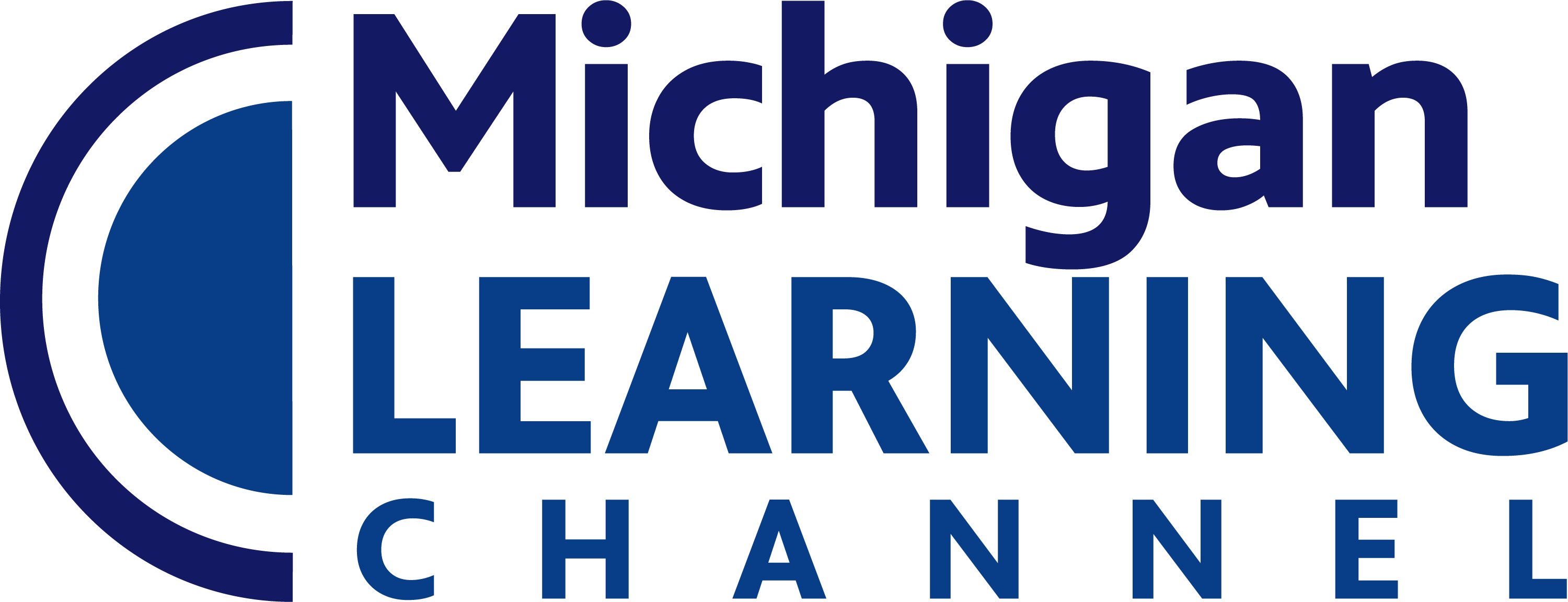Subjects
Shows
Choose a level of accuracy appropriate to limitations on measurement when reporting quantities.*
Know there is a complex number i such that i^2 = −1, and every complex number has the form a [...]
Use the relation i^2 = –1 and the commutative, associative, and distributive properties to add, subtract, and multiply complex numbers.
(+) Find the conjugate of a complex number; use conjugates to find moduli and quotients of complex numbers.
(+) Represent complex numbers on the complex plane in rectangular and polar form (including real and imaginary numbers), and explain [...]
(+) Represent addition, subtraction, multiplication, and conjugation of complex numbers geometrically on the complex plane; use properties of this representation [...]
(+) Calculate the distance between numbers in the complex plane as the modulus of the difference, and the midpoint of [...]
Solve quadratic equations with real coefficients that have complex solutions.
(+) Extend polynomial identities to the complex numbers. For example, rewrite x^2 + 4 as (x + 2i)(x – 2i).
(+) Know the Fundamental Theorem of Algebra; show that it is true for quadratic polynomials.
(+) Recognize vector quantities as having both magnitude and direction. Represent vector quantities by directed line segments, and use appropriate [...]
(+) Find the components of a vector by subtracting the coordinates of an initial point from the coordinates of a [...]
(+) Solve problems involving velocity and other quantities that can be represented by vectors.
(+) Add vectors end-to-end, component-wise, and by the parallelogram rule. Understand that the magnitude of a sum of two vectors [...]
(+) Given two vectors in magnitude and direction form, determine the magnitude and direction of their sum.
(+) Understand vector subtraction v – w as v + (–w), where (–w) is the additive inverse of w, with [...]
(+) Perform operations on vectors. Multiply a vector by a scalar.
(+) Represent scalar multiplication graphically by scaling vectors and possibly reversing their direction; perform scalar multiplication component-wise, e.g., as c(v(sub [...]
Explain how the definition of the meaning of rational exponents follows from extending the properties of integer exponents to those [...]
Rewrite expressions involving radicals and rational exponents using the properties of exponents.
Explain why the sum or product of rational numbers is rational; that the sum of a rational number and an [...]
Use units as a way to understand problems and to guide the solution of multi-step problems; choose and interpret units [...]
Evaluate licenses that limit or restrict use of computational artifacts when using resources such as libraries.
Evaluate and refine computational artifacts to make them more usable and accessible.
Design and develop computational artifacts working in team roles using collaborative tools.
Document design decisions using text, graphics, presentations, and/or demonstrations in the development of complex programs.
Evaluate the ways computing impacts personal, ethical, social, economic, and cultural practices.
Test and refine computational artifacts to reduce bias and equity deficits.
Demonstrate ways a given algorithm applies to problems across disciplines.
Use tools and methods for collaboration on a project to increase connectivity of people in different cultures and career fields.
Explain the beneficial and harmful effects that intellectual property laws can have on innovation.
Explain the privacy concerns related to the collection and generation of data through automated processes that may not be evident [...]
Evaluate the social and economic implications of privacy in the context of safety, law, or ethics.
Explain how abstractions hide the underlying implementation details of computing systems embedded in everyday objects.
Compare levels of abstraction and interactions between application software, system software, and hardware layers.
Develop guidelines that convey systematic troubleshooting strategies that others can use to identify and fix errors.
Evaluate the scalability and reliability of networks, by describing the relationship between routers, switches, servers, topology, and addressing.
Give examples to illustrate how sensitive data can be affected by malware and other attacks.
Recommend security measures to address various scenarios based on factors such as efficiency, feasibility, and ethical impacts.
Compare various security measures, considering tradeoffs between the usability and security of a computing system.
Explain tradeoffs when selecting and implementing cybersecurity recommendations.
Translate between different bit representations of real-world phenomena, such as characters, numbers, and images.
Evaluate the tradeoffs in how data elements are organized and where data is stored.
Create interactive data visualizations using software tools to help others better understand real-world phenomena.
Create computational models that represent the relationships among different elements of data collected from a phenomenon or process.
Create prototypes that use algorithms to solve computational problems by leveraging prior student knowledge and personal interests.
Use lists to simplify solutions, generalizing computational problems instead of repeatedly using simple variables.
Justify the selection of specific control structures when tradeoffs involve implementation, readability, and program performance, and explain the benefits and [...]
Design and iteratively develop computational artifacts for practical intent, personal expression, or to address a societal issue by using events [...]
Subjects
Shows
Choose a level of accuracy appropriate to limitations on measurement when reporting quantities.*
Know there is a complex number i such that i^2 = −1, and every complex number has the form a [...]
Use the relation i^2 = –1 and the commutative, associative, and distributive properties to add, subtract, and multiply complex numbers.
(+) Find the conjugate of a complex number; use conjugates to find moduli and quotients of complex numbers.
(+) Represent complex numbers on the complex plane in rectangular and polar form (including real and imaginary numbers), and explain [...]
(+) Represent addition, subtraction, multiplication, and conjugation of complex numbers geometrically on the complex plane; use properties of this representation [...]
(+) Calculate the distance between numbers in the complex plane as the modulus of the difference, and the midpoint of [...]
Solve quadratic equations with real coefficients that have complex solutions.
(+) Extend polynomial identities to the complex numbers. For example, rewrite x^2 + 4 as (x + 2i)(x – 2i).
(+) Know the Fundamental Theorem of Algebra; show that it is true for quadratic polynomials.
(+) Recognize vector quantities as having both magnitude and direction. Represent vector quantities by directed line segments, and use appropriate [...]
(+) Find the components of a vector by subtracting the coordinates of an initial point from the coordinates of a [...]
(+) Solve problems involving velocity and other quantities that can be represented by vectors.
(+) Add vectors end-to-end, component-wise, and by the parallelogram rule. Understand that the magnitude of a sum of two vectors [...]
(+) Given two vectors in magnitude and direction form, determine the magnitude and direction of their sum.
(+) Understand vector subtraction v – w as v + (–w), where (–w) is the additive inverse of w, with [...]
(+) Perform operations on vectors. Multiply a vector by a scalar.
(+) Represent scalar multiplication graphically by scaling vectors and possibly reversing their direction; perform scalar multiplication component-wise, e.g., as c(v(sub [...]
Explain how the definition of the meaning of rational exponents follows from extending the properties of integer exponents to those [...]
Rewrite expressions involving radicals and rational exponents using the properties of exponents.
Explain why the sum or product of rational numbers is rational; that the sum of a rational number and an [...]
Use units as a way to understand problems and to guide the solution of multi-step problems; choose and interpret units [...]
Evaluate licenses that limit or restrict use of computational artifacts when using resources such as libraries.
Evaluate and refine computational artifacts to make them more usable and accessible.
Design and develop computational artifacts working in team roles using collaborative tools.
Document design decisions using text, graphics, presentations, and/or demonstrations in the development of complex programs.
Evaluate the ways computing impacts personal, ethical, social, economic, and cultural practices.
Test and refine computational artifacts to reduce bias and equity deficits.
Demonstrate ways a given algorithm applies to problems across disciplines.
Use tools and methods for collaboration on a project to increase connectivity of people in different cultures and career fields.
Explain the beneficial and harmful effects that intellectual property laws can have on innovation.
Explain the privacy concerns related to the collection and generation of data through automated processes that may not be evident [...]
Evaluate the social and economic implications of privacy in the context of safety, law, or ethics.
Explain how abstractions hide the underlying implementation details of computing systems embedded in everyday objects.
Compare levels of abstraction and interactions between application software, system software, and hardware layers.
Develop guidelines that convey systematic troubleshooting strategies that others can use to identify and fix errors.
Evaluate the scalability and reliability of networks, by describing the relationship between routers, switches, servers, topology, and addressing.
Give examples to illustrate how sensitive data can be affected by malware and other attacks.
Recommend security measures to address various scenarios based on factors such as efficiency, feasibility, and ethical impacts.
Compare various security measures, considering tradeoffs between the usability and security of a computing system.
Explain tradeoffs when selecting and implementing cybersecurity recommendations.
Translate between different bit representations of real-world phenomena, such as characters, numbers, and images.
Evaluate the tradeoffs in how data elements are organized and where data is stored.
Create interactive data visualizations using software tools to help others better understand real-world phenomena.
Create computational models that represent the relationships among different elements of data collected from a phenomenon or process.
Create prototypes that use algorithms to solve computational problems by leveraging prior student knowledge and personal interests.
Use lists to simplify solutions, generalizing computational problems instead of repeatedly using simple variables.
Justify the selection of specific control structures when tradeoffs involve implementation, readability, and program performance, and explain the benefits and [...]
Design and iteratively develop computational artifacts for practical intent, personal expression, or to address a societal issue by using events [...]


